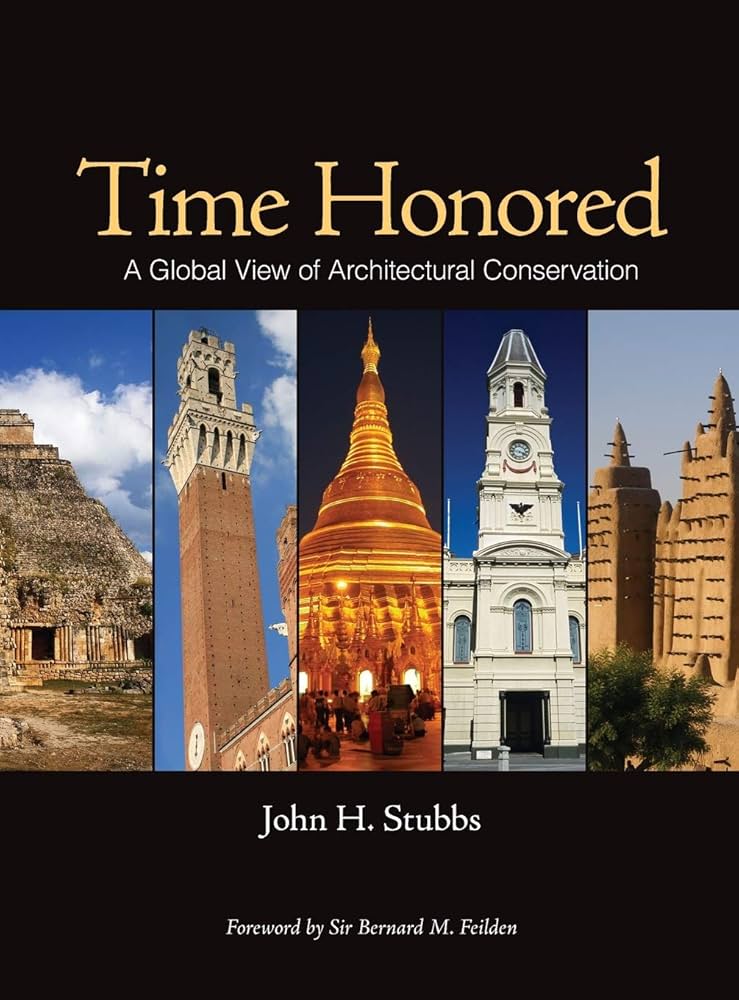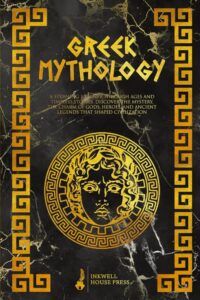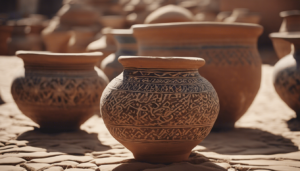Cultural heritage encompasses the traditions, practices, and expressions that define a community’s identity. It plays a crucial role in connecting generations, providing a sense of belonging and continuity.
Music, as a powerful medium of expression, serves as both a vessel and a catalyst for the preservation of this heritage. This article examines the significance of cultural heritage preservation, detailing how music facilitates this process through oral traditions and cultural transmission. It also highlights inspiring case studies from around the world.
Furthermore, the article addresses the challenges encountered in this endeavor and discusses practical steps that individuals can take to contribute to the preservation of their own cultural legacies.
This exploration aims to illuminate the rhythms and melodies that unify us all.
What Is Cultural Heritage?
.jpg_00.jpeg)
Cultural heritage encompasses the traditions, customs, and artifacts that are transmitted across generations, significantly influencing community identity, cultural expression, and the overall fabric of society.
It includes both tangible elements, such as monuments and artifacts, and intangible aspects, including folklore, music, and oral traditions that shape cultural narratives and collective memory. These aspects are crucial for understanding the cultural significance and historical narratives that bind societies.
By preserving cultural heritage, we contribute to a rich tapestry of cultural diversity that reflects our shared human experience, fostering social cohesion and understanding among various communities worldwide. Music preservation and heritage conservation efforts play a key role in this process.
Music, in particular, plays a crucial role in this preservation, serving as an essential conduit for cultural transmission and a medium through which folk traditions and indigenous rights are celebrated. Music and history intertwine to create vibrant soundscapes that honor traditional rituals and local customs.
Why Is It Important to Preserve Cultural Heritage?
Preserving cultural heritage is crucial for maintaining historical continuity and ensuring that future generations have access to and can appreciate the cultural narratives that shape their identities.
This preservation fosters a sense of belonging, enhances community engagement, and reinforces social cohesion by connecting individuals to their roots and traditions through music and identity.
It facilitates the revival of traditions, promotes cultural awareness, and encourages the continuation of artistic legacies, while also safeguarding intangible cultural heritage, such as music and oral traditions, which are vital to the identities of local communities. Music education and music therapy are instrumental in these preservation efforts.
Furthermore, ongoing documentation and advocacy for music preservation efforts play a significant role in cultural sustainability and the social fabric of diverse societies. Ethnomusicology and musicology contribute to these efforts by providing insights into cultural narratives and historical significance.
How Can Music Help Preserve Cultural Heritage?
Music serves as a significant medium for the preservation of cultural heritage, facilitating the transmission of local narratives, folk traditions, and indigenous rights across generations. Music as heritage is key in preserving cultural identity and fostering community resilience.
Through music, communities are able to articulate their cultural identities and engage in participatory music practices that enhance their social cohesion, promoting cultural programs and grassroots movements.
This form of cultural expression promotes the revival of traditional songs and instruments, cultivating a sense of pride and belonging among community members while also providing education on the historical significance of their musical heritage. Community resilience is strengthened through these local musicians and their artistic practices.
Ethnomusicology plays an essential role in documenting these practices, thereby reinforcing music’s function as a pivotal tool for cultural advocacy and preservation. Music research and archival practices contribute to this documentation.
1. Oral Tradition
Oral traditions represent a crucial component of cultural heritage, functioning as a means of preserving history, values, and cultural narratives through storytelling and music. These traditions encapsulate the lived experiences of communities, fostering a sense of identity and continuity across generations. Cultural storytelling and music and memory are vital elements of these practices.
By integrating music into oral storytelling, communities engage in a form of cultural expression that is both dynamic and reflective of their unique heritage. This method of cultural transmission is essential for maintaining the richness of local narratives and ensuring their relevance for both current and future generations.
Through these practices, elders impart wisdom, moral lessons, and shared experiences that strengthen community bonds. Oral traditions often adapt over time, allowing for the integration of contemporary issues while honoring foundational stories. These practices are essential for cultural heritage management and preservation efforts.
This adaptability is vital for maintaining cultural relevance, enabling members to connect with their roots in a rapidly changing world. Ultimately, the significance of oral traditions lies not only in their function as educational tools but also in their capacity to unite communities, nurture collective memory, and celebrate the diversity of human expression.
2. Cultural Transmission
Cultural transmission refers to the systematic process through which cultural practices, beliefs, and art forms are conveyed from one generation to the next, often exemplified through music education and community engagement. This process is critical for preserving the integrity of cultural identity, ensuring that traditional songs, musical styles, and practices continue to flourish in an increasingly globalized environment.
By creating supportive environments that promote music learning and participation, communities can enhance their understanding and appreciation of their cultural heritage, thereby reinforcing connections among members and promoting cultural sustainability.
The significance of music in this context is substantial; it serves as a dynamic medium for storytelling and emotional expression, bridging gaps between diverse age groups and backgrounds. Music and society are interlinked through these cultural landscapes.
When individuals engage with music, whether through formal education or community workshops, they establish not only personal connections to their heritage but also a collective sense of belonging. This interactive process fortifies communal ties and encourages collaborative creativity, which are vital for transmitting cultural narratives.
By investing in music initiatives, communities not only protect their distinctive identities but also motivate future generations to recognize the importance of their artistic traditions. Such efforts contribute to the preservation of acoustic heritage and cultural landscapes.
3. Cultural Identity
.jpg_01.jpeg)
Cultural identity is profoundly intertwined with music, serving as a vital expression of community values, beliefs, and shared history. Through various musical forms, communities articulate their unique identities while engaging in collaborative projects that celebrate their heritage.
Music functions as a tool for identity preservation, enabling individuals to connect with their roots and participate in cultural expressions that reflect their lived experiences. Community music initiatives play a crucial role in fostering this connection, promoting participation and dialogue among diverse groups while reinforcing the significance of cultural identity in an increasingly globalized society. Cross-cultural exchange and multiculturalism are promoted through these efforts.
In essence, musical practices serve as a medium for communities to explore and assert their identities, showcasing the distinctive characteristics that differentiate them. For example, the revival of traditional folk music among indigenous groups not only preserves their unique sounds but also strengthens communal bonds. These practices highlight the cultural significance of music and anthropology.
Initiatives such as local music festivals and workshops provide participants with opportunities to share stories and traditions, emphasizing the power of collective music-making. Music documentation and preservation strategies are integral to these initiatives.
In urban environments, multicultural music programs create safe spaces for diverse populations to express themselves, fostering understanding and appreciation through shared artistic experiences. These efforts not only celebrate heritage but also actively contribute to the ongoing narrative of cultural identity.
Case Studies of Music Preserving Cultural Heritage
An examination of case studies focused on music as a means of preserving cultural heritage demonstrates the significant impact that musical practices can exert on local communities and their cultural narratives. Music appreciation and regional music styles are highlighted in these global heritage projects.
These case studies illustrate various genres and traditions that encapsulate the core of cultural identity and heritage conservation, highlighting the active engagement of communities in efforts to preserve their musical legacies.
By documenting these practices and disseminating local narratives, we can enhance our understanding of the role of music in cultural revitalization, as well as the ongoing challenges related to the preservation of indigenous rights and folk traditions in an evolving global landscape. Music advocacy and heritage education are critical components of these efforts.
1. Native American Drumming and Singing
Native American drumming and singing embody a significant aspect of cultural heritage, intricately linked to identity, spirituality, and community values. These powerful musical forms serve not only as a means of individual expression but also as a unifying force among tribe members, fostering a shared identity that transcends generations. Musical performance and traditional rituals are central to these cultural expressions.
During ceremonies and celebrations, the rhythmic beats and melodic chants invoke ancestral spirits, facilitating connections to the past while reinforcing communal bonds. Traditional gatherings, such as powwows, present vibrant performances that highlight diverse styles of drumming and singing, celebrating the unique stories and heritage of each tribe.
These events play a crucial role in educating the youth about their lineage and fostering a deep respect for their cultural roots, thereby ensuring that these traditions endure as living legacies.
2. Maori Haka in New Zealand
The Maori haka is a powerful cultural performance that embodies the history, identity, and values of the Maori people in New Zealand. This traditional dance, characterized by vigorous movements and chanting, serves not only as a means of cultural expression but also as a tool for community engagement and the revitalization of Maori cultural practices. Through the haka, communities celebrate their identity and cultural heritage while fostering a sense of unity and pride among their members.
The origins of the haka can be traced back to ancient tribal warfare, where it was performed to intimidate opponents and evoke bravery among warriors. Over time, the significance of this expressive dance has evolved, transitioning from a battlefield tradition to a ceremonial performance that marks important events such as weddings, funerals, and community gatherings. This evolution highlights the importance of cultural transmission and adaptation in maintaining its relevance.
The intricate gestures and rhythmic vocalizations involved in each version of the haka convey specific meanings and cultural narratives, making it a deeply personal and collective expression of cultural heritage.
By actively participating in the haka, both Maori and non-Maori individuals can engage with and appreciate the rich tapestry of indigenous culture, fostering cross-cultural exchange and dialogue, and encouraging a greater understanding of New Zealand’s diverse societal fabric.
3. Flamenco Music in Spain
Flamenco music, which originates from the Andalusian region of Spain, represents a vibrant artistic legacy that encapsulates the intangible cultural heritage and cultural identity of the Spanish people. This expressive art form, characterized by intricate guitar playing, passionate vocals, and percussive footwork, conveys profound emotions and reflects the diverse influences of various cultural practices and historical narratives throughout history.
To fully appreciate the role of Flamenco in preserving cultural identity, it is crucial to recognize its emergence during periods of historical adversity, when marginalized communities utilized music as a means of cultural storytelling and reclaiming their cultural narratives.
In contemporary society, local communities actively engage in music preservation of this unique art form by organizing cultural festivals, workshops, and educational programs designed to teach younger generations the intricacies of its rhythms and styles.
Furthermore, collaborations between artists and cultural institutions are essential to this effort, as they integrate traditional elements with contemporary influences, ensuring that Flamenco continues to evolve while maintaining its authentic essence.
These initiatives not only support artistic expression but also nurture a sense of pride in Andalusian culture, thereby enriching the broader tapestry of global music traditions and heritage.
4. Gamelan Music in Indonesia
.jpg_10.jpeg)
Gamelan music, a traditional ensemble form originating from Indonesia, exemplifies the region’s rich cultural heritage and artistic diversity. This distinctive musical practice features a range of traditional instruments, including metallophones, gongs, and drums, which collectively create intricate and harmonious soundscapes that are essential to Indonesian cultural expression.
Community-based initiatives and music preservation efforts play a vital role in the preservation of Gamelan music by promoting education, performance, and cultural exchange, thereby ensuring that this artistic legacy continues to thrive and evolve.
The captivating rhythms and melodies of Gamelan evoke a profound sense of community and tradition, making it an integral component of various ceremonies and celebrations throughout Indonesia. Numerous schools and cultural organizations have initiated programs designed to teach the fundamentals of Gamelan to younger generations, thereby fostering a deep appreciation for this traditional art form.
Festivals dedicated to Gamelan not only serve as platforms for contemporary interpretations but also promote music collaboration among musicians, ensuring that the genre adapts while honoring its roots. These endeavors underscore the significance of Gamelan music not merely as a cultural artifact but as a dynamic expression of Indonesian identity and musical heritage.
Challenges and Controversies in Preserving Cultural Heritage Through Music
The preservation of cultural heritage through music encounters various challenges and controversies that complicate the efforts to maintain the authenticity and integrity of traditional practices.
Issues such as cultural appropriation, commercialization, and the pressures of modernization frequently jeopardize the viability of local narratives, folk traditions, and intangible cultural heritage.
Striking a balance between the necessity for cultural preservation and the realities of globalization, along with evolving societal norms, constitutes a complex undertaking that necessitates meticulous consideration of cultural significance and the perspectives of the community.
1. Appropriation vs. Appreciation
The distinction between cultural appropriation and appreciation is a critical topic within the discourse on music preservation and cultural identity. Appreciation involves a respectful engagement with and understanding of cultural practices, whereas appropriation often leads to the commodification and misrepresentation of those traditions, diminishing their significance.
This nuanced conversation is essential for ensuring that cultural heritage is preserved authentically and respectfully, honoring the voices and contributions of the communities from which these practices originate.
This differentiation is particularly relevant when examining music as both a reflection of cultural identity and a medium for its transmission. Musicians and enthusiasts must navigate the delicate balance of honoring the roots of a genre while sharing it with broader audiences.
When music is appreciated within its cultural context and historical framework, it fosters a genuine connection among diverse groups. In contrast, appropriating elements without a comprehensive understanding of their cultural significance risks erasing the narratives and traditions that enrich our global tapestry.
Therefore, fostering a dialogue surrounding these concepts not only enhances musical experiences but also promotes a deeper respect for the cultures that shape our collective musical heritage and cultural diversity.
2. Commercialization and Exploitation
The commercialization of cultural heritage through music presents considerable risks to the authenticity and integrity of traditional practices, as the pursuit of profit may lead to exploitation and the dilution of cultural significance.
When music is commodified, the original meaning and context of these art forms can be lost or misrepresented, which has detrimental effects on the communities that hold them in high regard. It is crucial to strike a balance between promoting cultural heritage and ensuring that it is represented in a responsible and ethical manner.
For example, the emergence of global music festivals often promotes a sanitized version of traditional sounds, stripping away the deeper narratives and lived experiences that shape these genres.
This phenomenon can result in a superficial appreciation, where audiences engage with cultural offerings without a comprehensive understanding of their origins.
Furthermore, the pressures of mainstream appeal may compel artists to alter their music, thereby sacrificing authenticity for commercial viability. This ongoing tension underscores the urgent need for collaboration between cultural custodians and commercial entities to ensure that the essence of musical heritage is preserved and celebrated, without succumbing to exploitation.
3. Modernization and Loss of Tradition
Modernization can result in the erosion of traditional cultural practices, including music, as societies evolve and adapt to new technologies and lifestyles. This transformation often leads to a decreased appreciation for folk traditions and indigenous music, thereby threatening the continuity of cultural narratives that have been preserved for generations.
As communities confront the pressures of globalization and social change, it is increasingly critical to advocate for music preservation strategies and initiatives that honor and revitalize these traditions.
The rapid advancement of technology significantly alters the ways in which music is produced, distributed, and consumed, frequently prioritizing commercial appeal over cultural relevance. This shift can result in the homogenization of musical styles, where unique sounds and practices are overshadowed by mainstream trends. Consequently, younger generations may be drawn to digital platforms that emphasize popular music, inadvertently neglecting their cultural heritage.
Therefore, without intentional efforts to document, share, and celebrate indigenous and folk music, there exists a tangible risk of cultural erasure. It is essential for cultural scholars, musicians, and communities to engage in ongoing dialogues regarding the importance of preserving musical heritage within a contemporary framework.
What Can Individuals Do to Help Preserve Cultural Heritage Through Music?
.jpg_11.jpeg)
Individuals hold a vital position in the preservation of cultural heritage through music by actively participating in community-based initiatives, supporting local musicians, and promoting cultural awareness programs.
By attending music festivals, engaging in traditional music workshops, and advocating for music education, individuals can significantly contribute to the sustainability of cultural practices and the cultural revitalization of folk traditions.
It is imperative to acknowledge the importance of grassroots movements and music advocacy in advancing cultural preservation efforts, thereby ensuring that diverse musical expressions continue to flourish.
Frequently Asked Questions
How does music contribute to cultural preservation?
Music plays a central role in cultural preservation by acting as a medium for cultural transmission and expression. Through music, traditional stories, practices, and identities are maintained and passed down through generations, ensuring continuity and resilience of cultural heritage.
What is cultural heritage?
Cultural heritage encompasses the tangible and intangible elements that define the identity and history of a community, including art, traditions, language, and practices. It is vital for fostering a sense of belonging and cultural diversity, promoting the understanding and appreciation of different cultural landscapes.
Cultural heritage refers to the traditions, customs, beliefs, and values that are passed down from one generation to another within a particular community or society. It includes tangible elements such as artifacts, buildings, and heritage sites, as well as intangible aspects such as music, dance, and language. The preservation of cultural heritage is crucial for maintaining cultural identity and ensuring cultural diversity.
How does music play a role in preserving cultural heritage and cultural expression?
Music is a powerful medium for preserving cultural heritage and cultural expression because it reflects the identity and values of a community or society. It serves as a form of cultural transmission, a means of passing down oral traditions, stories, and beliefs from one generation to the next, ensuring that cultural heritage is not lost or forgotten. Music education and music documentation are vital components in this preservation process.
Can you provide examples of how music has been used to preserve cultural heritage and promote cultural diversity?
There are many examples around the world of how music has been used to preserve cultural heritage and promote cultural diversity. For instance, the Maori people in New Zealand use music to pass down their oral traditions and histories. In India, classical music forms such as Hindustani and Carnatic are deeply rooted in cultural and religious traditions. In Africa, traditional instruments and music are often used in ceremonies and rituals to honor ancestors and preserve cultural practices. Music festivals and community engagement initiatives globally showcase the diversity in music and its role in cultural revitalization.
Are there any case studies or global heritage projects that highlight the importance of music in preserving cultural heritage?
Yes, there are several case studies that showcase the significance of music in preserving cultural heritage. One such example is the preservation of intangible cultural heritage in Brazil through the use of music, where traditional songs and instruments are recognized as important elements of cultural identity. UNESCO has recognized these efforts as vital to heritage conservation. Another case study is the role of music in preserving the cultural heritage of indigenous communities in Australia, where music is used to pass down cultural knowledge and maintain cultural traditions. These examples highlight the importance of music collaboration and community-based initiatives in cultural preservation.
What are the challenges and preservation strategies in preserving cultural heritage through music?
There are various challenges that arise in preserving cultural heritage through music. These include the loss of traditional knowledge and practices, the commercialization of traditional music and its resulting dilution, and the lack of support and resources for preserving and promoting traditional music. Preservation strategies such as music archiving and support for local musicians are essential. Additionally, globalization and the influences of modern music can also threaten the preservation of cultural heritage through music. Engaging in music research and music advocacy can help counter these challenges.
How can individuals and communities contribute to preserving cultural heritage through music?
Individuals can contribute to preserving cultural heritage through music by supporting and participating in traditional music events and performances, learning about the cultural significance and history of different music forms, and sharing and promoting traditional music with others. Community resilience and grassroots movements play a significant role in these efforts. Additionally, individuals can also support organizations and initiatives that work towards preserving and promoting traditional music and cultural heritage. Engaging in interdisciplinary studies and music appreciation activities further enhances understanding and respect for diverse musical heritage.

My name is Bruno, I have been a writer for 5 years and I work with website creation. My goal is to provide true information to readers. In fact, on this site I write about cultures and traditions, which I have been passionate about since childhood.




